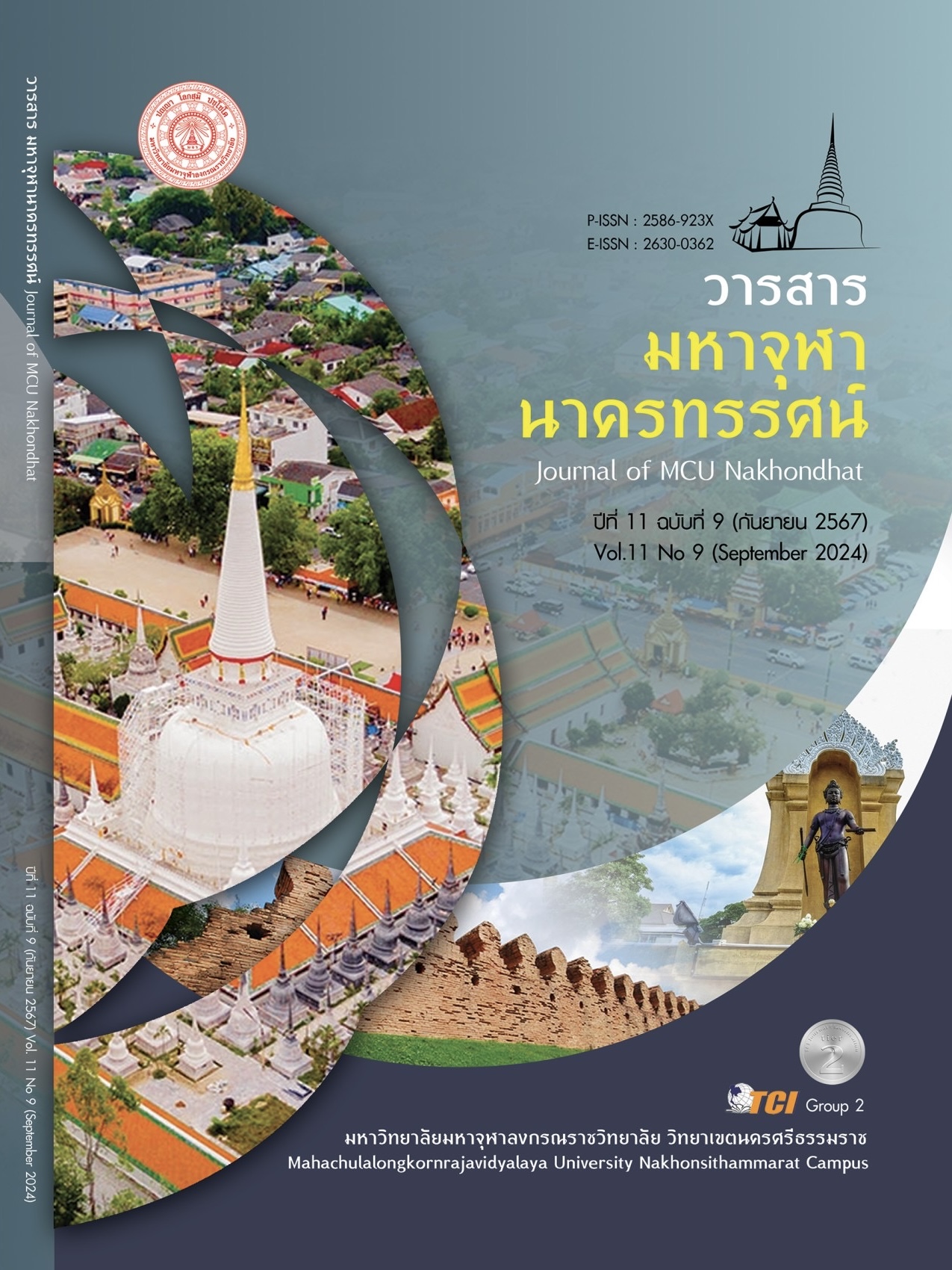MODEL FOR DEVELOPMENT THE FEMALE LEADERSHIP OF FEMALE MIDDLE ADMINISTRATORS OF UNIVERSITIES IN GUANGXI
Main Article Content
Abstract
The purpose of this research was to study the Model for Development the Female Leadership of Female Middle Administrators of Universities in Guangxi. The population consisted of 238 female with qualified as female executives at faculty and central executive levels from a state undergraduate university in Guangxi Province. The research instrument was a questionnaire with a reliability of 0.97. Data were analyzed using percentages, means, standard deviations, and content analysis. The results of the research found that the leadership development model of female middle managers of universities in Guangxi consisted of flexible leadership charm, inspiring motivation, intellectual stimulation, ethical management, and individual care. An elegant manager should be someone with relevant authority and responsibility, have some management potential, participate in real-life management activities, and be responsible for planning, organizing, and controlling resources for maximum benefit. They should have excellent coordination of behaviors and interpersonal relationships among members of the organization. When considering each aspect, the overall picture of all five aspects was at a high level. Individual care had the highest mean, followed by intellectual stimulation and intellectual stimulation. It has the lowest average value, with all 5 dimensions consisting of 27 measures: flexible leadership (6 measures), inspiration (4 measures), intellectual stimulation (6 measures), ethical management (6 measures), and personalized care (5 measures), with the main goal of achieving organizational excellence through developing female leadership in executives with management competence that effectively covers the organization's success indicators.
Article Details

This work is licensed under a Creative Commons Attribution-NonCommercial-NoDerivatives 4.0 International License.
References
Bu, Z. & Liu, Z. (2021). A study on the impact of female leadership characteristics on corporate innovation performance. Journal of Inner Mongolia University of Finance and Economics, 19(2), 131-135.
Chamorro, P. T. (2020). Praising masculine leadership is ignoring women. Journal of Entrepreneur Information, 14(3), 228-231.
Chen, C. (2020). How to improve women's leadership. Journal of China Leadership Science, 7(3), 41-44.
Liao, J. (2020). The content structure and improvement strategies of grassroots female cadres’ leadership in the new era. Journal of Decision Exploration, 6(12), 260-262.
Su, B. & Zhang, W. (2020). The construction of young female leadership courses in colleges and universities: A summary of the course construction seminar. Journal of China Women’s University, 32(2), 44-47.
Zeng, R. (2021). Enhancing the personality leadership of female cadres. Journal of Decision-making, 3(12), 50-53.
Zhao, K. (2020). The development dilemma and improvement path of female leadership in higher education management in the new era. Journal of Educational Theory and Practice, 6(9), 14-16.
Zheng, C. (2020). A study on female leadership education in Asian Women’s University. Journal of Shanghai Normal University, 12(15), 308-309.
Zhou, Y. (2016). A perspective on the development of female leadership from female mayors. Journal of Leadership Science, 9(1), 48-50.
Zhu, J. & Kang, X. (2018). An interpretation of the female leadership project in New Zealand universities. Journal of Higher Education Development and Evaluation, 34(1), 83-93.
Zhu, Y. (2018). A study on the evolution of Transformation leadership and role spillover of female leaders at the top of enterprises (Doctoral dissertation). Journal of Education of Tongji University, 15(8), 123-129.


